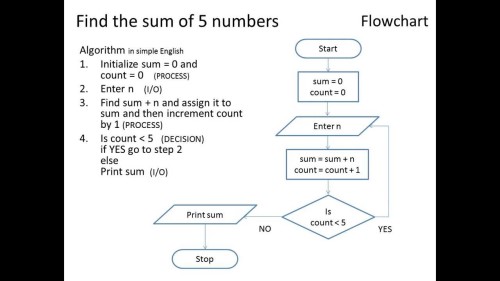When the Rubik Cube appeared in the early 1980s, I tried twisting and turning the colors to get them all aligned. I failed. Finding out that there are 3 billion possible ways to turn the cube’s corners, edges, and center to get the solution comforted me not a bit. Nor did knowing that one out of seven people on the planet (yes, the planet) have tried to solve the puzzle. Especially after I read that the speed record–established in November 2015–for solving the puzzle is now under five seconds (not minutes nor hours, but seconds). A blindfolded participant (yes, blindfolded) in the China Championship (2015) solved the Rubik Cube in 21 seconds. I gave up. And I have not tried since. This is the end of my confession of failure to solve the Rubik’s Cube.
Now what does the Rubik Cube have to do with school reform then and now? The Rubik Cube is complicated; school reform is complex. I and many others have pointed out the distinction between complicated and complex. This post offers another distinction, one that is crucial for policymakers, practitioners, parents, and researchers to consider before adopting and implementing policies in school curriculum, organization, governance, and pedagogy that touch children and youth. That distinction is: changing school structures and culture to reshape classroom pedagogy is far harder to do than solving Rubik’s Cube.
Like the Rubik’s Cube, there are many moving parts to altering what teachers do in their classrooms such as school structures, culture, and interactions (many of which can not be predicted) between and among adults and children, and life outside of school. These moving parts have to work in sync in order for students to benefit. When it occurs, it is a beauty to behold. But most of the time the moving parts do not mesh.
Why?
Because reformers believe that reforming a school is a matter of providing the right incentives to motivate children and adults, laying out clear and measurable objectives, planning the tasks to be done step-by-step, executing those tasks efficiently, measuring results, evaluating the outcomes, and correcting errors. Then repeat the cycle. But reforming a school goes beyond clever design, putting the right people in the right slots, efficient execution of tasks, and measuring results. There are no algorithms for “good” high schools. Which is why reformers get stumped by the complexity of altering a school and what teachers do.
What makes it hard (i.e., complex) to create and sustain a “successful” school–however measured–is that there are no algorithms–as there are for the Cube–to get from here to there. Space flight to the moon, shuttles to a space-station orbiting the earth, and preparations for an eventual mission to the planet Mars are enormously complicated efforts that have been planned and executed (albeit with a few disasters) flawlessly. But complicated does not equal complex. There is no Mission Control for school reform in a decentralized national system of schooling. One example of the complexity of school reform will illustrate what I mean.
Take the U.S. high school. Begun in the mid-19th century, subsequent reforms created the comprehensive high school with college prep, commercial, and vocational curricula housing 1500 or more teenagers in the 1920s. Since then the institution has been praised and attacked every single decade for nearly a century. Policymakers have adopted reform-after-reform: from many curricula in the high school to everyone-goes-to-college; from conventionally organized schools with 50-minute periods and academic departments to ones that are re-organized (e.g., hour-and-a-half block for periods, subject matter departments disbanded, team teaching); from 1500 to 2000 or more students to small high schools (e.g., 500 students or less); from dominant teacher-centered pedagogy to more personalized and individualized ways of teaching (e.g., project based learning, student-centered teaching, online instruction)–see here, here, and here.
Some reforms stuck, many did not. No surprise then that the high school that parents and grandparents once attended would be familiar to them even now. Altering school structures and cultures is tough to do because high schools are complex organizations situated in a mercurial, ever-shifting political, social, economic, and technological environment. Surely, there have been changes in size, curriculum offerings, use of technologies, and instruction but these changes–actually political responses to clamor among those who make policy, pay taxes, vote, and demand changes–preserved the essential organizational arrangements (e.g., age-graded school, subject matter departments, hour-long periods of instruction, etc.) and, truth be told, how most teachers teach.
Here’s a thought experiment. Imagine some of the moving parts and myriad interactions that have to occur in designing a very different kind of high school aimed at those students who want to go to college and succeed economically in the U.S. Here are the elements that I would imagine have to be in place and occur for such an imagined (and complex) high school.**
*Recruit and train teachers who have the subject matter knowledge and skills to work with youth before, during, and after the school day.
*Recruit and train school site leaders who have the expertise and skills to lead a school and be a pillow and sandpaper simultaneously with teachers, students, and parents.
*Every student takes a college prep curriculum, aligned with district standards, that enables them to enter any higher education institution in the state.
*Every student has access to non-academic subjects that cultivate the mind, heart, and sensibilities.
*Equip all students with the knowledge and skills not only to enter college but have the wherewithal to persist through four years and get a bachelor’s degree.
*Organize the school day, week, and month that provides students with sufficient time in and out of class to learn the prescribed material and core cognitive skills to master a subject, acquire the essential skills of planning and assessing their progress in each course they take, receive tutorial help when student skill levels are below par, and time for students to receive mentoring from teachers they trust.
*Build a culture of respect, safety, and focus on collaboration and learning for both youth and adults.
*Create a decision-making process that is inclusive, self-critical, and strong enough to make further changes in all of the above.
*Do all of the above efficiently within available resources.
Note that the design takes-for-granted the age-graded high school structures of administrators, academic departments, and teachers in self-contained classrooms. Note further that none of the elements of the design favor any particular pedagogy–neither teacher- or student-centered lessons or hybrids of both.
Easy as it is to list the components of such an imagined design, there is much that goes unmentioned. Nowhere, for example, do I note the required interactions (both routine and unexpected) between and among students, teachers, administrators, and parents that occur daily. Nor have I listed the unanticipated changes that occur regularly within political institutions such as schools (e.g., budget cuts, parental crises, student suicide, illness of a highly-respected administrator; spike in teacher turnover, or maybe a pandemic). All of the design pieces and these elements are moving parts that have to come together at a moment in time to work. Friction, mishaps, and stumbles occur all the time as people and events interact. Longevity of such designs are rare. A short, happy life of such high school reforms is the norm.
Is high school school reform easy as a Rubik’s Cube? Hardly. Wannabe reformers believe there are algorithms that lead to success. There are none.
___________
**Some readers may ask: where do these features come from? The answer is that decades of research and experience with high school reform from the effective schools research of the 1980s and 1990s, the federally-subsidized research on Whole School Reform, and both research and experience gained from the small high schools movement form the basis for generating these features. Also there is the evidence drawn from small high school models launched and sustained within urban charter schools across the nation such as by Aspire, Kipp, Green Dot, Leadership Public Schools, and Summit Charter Schools. Finally, my experiences as a high school teacher for 14 years, a superintendent of a district for seven years, a trustee for a charter school organization for three years, and a researcher studying successful and failing high schools have given me a framework for analyzing and imagining high school improvement.



